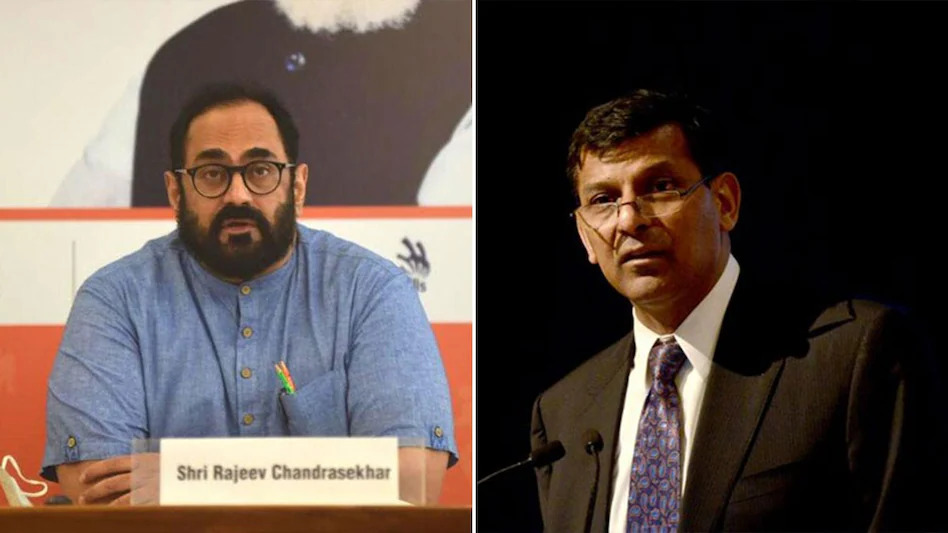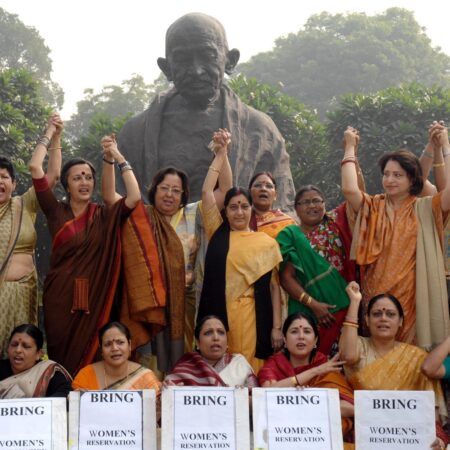Rajeev Chandrasekhar, the Minister of State for Electronics and Information Technology, strongly criticized an eight-page paper written by Raghuram Rajan, former Governor of the Reserve Bank of India (RBI)
Chandrasekhar, a finance expert from the University of Chicago, expressed doubts about Rajan’s comprehension of electronics supply chains, semiconductors, and the very foundations of economics. The paper, posted on LinkedIn by Rajan and two co-authors, focused on India’s mobile phone exports and analysed the government’s Production-Linked Incentive (PLI) scheme for mobile phone manufacturing, as well as the impact of tariffs on mobile phone part imports.
Rajan and Co-Authors
Rajan and his co-authors argued that despite the increase in mobile phone exports, the net exports of phones remained negative due to the majority of imported components. They claimed that assembly alone added minimal value to the phones, representing as little as 4% of the manufacturing cost and an even smaller portion of the retail price. Chandrasekhar acknowledged that the assembly had low value-addition but accused Rajan of using false data to conclude.
Chandrasekhar expressed his frustration with “repeat offenders” like Rajan, claiming they lacked pride, self-respect, and dignity. However, he did not dispute that assembly was a low-value-addition process.

He argued that as the component and sub-assembly ecosystem developed and scaled up, more jobs would be created, value addition would increase, and domestic companies would join the global supply chain. Chandrasekhar emphasized that the benefits of attracting supply chains could be realized both in the short term and the long term.
He criticized Rajan’s article for its false premise that all key electronics imports were solely for mobile phone production. Chandrasekhar stated that mobile production accounted for only a portion of the total key imports, which amounted to $32.4 billion.
He further claimed that an even smaller portion of the imported components was used in phones supported by PLI incentives. Chandrasekhar also questioned the reliability of Rajan’s sources, demanding that Rajan disclose them openly. He accused Rajan of writing a politically motivated article influenced by Rahul Gandhi, a prominent Indian politician.
Rajan responded to the criticism in a statement to avoid personal attacks. He expressed his satisfaction that the government was finally considering the data rather than relying on empty export numbers. Rajan highlighted the minister’s acknowledgement that the value addition in mobile phones made in India was primarily assembly and expressed hope that the country would progress towards full-scale manufacturing.
Rajeev Chandrasekhar, the Minister of State for Electronics and Information Technology, strongly criticized Raghuram Rajan‘s paper on India’s mobile phone exports. Chandrasekhar questioned Rajan’s understanding of electronics supply chains, semiconductors, and economics, accusing him of using false data and drawing flawed conclusions. Rajan responded by emphasizing the importance of data analysis and expressing hope for the future of mobile phone manufacturing in India.
Conclusion
Policymakers, economists, and industry experts must engage in constructive dialogue based on accurate and transparent data. By fostering an environment of open discourse, it becomes possible to address the challenges and potential opportunities in the mobile phone manufacturing sector effectively.
Only through a comprehensive understanding of the intricacies involved can the government formulate policies that support sustainable growth, foster innovation, and create a favourable environment for domestic companies to thrive.
Ultimately, the objective should be to strike a balance between short-term gains and long-term aspirations. While immediate benefits may arise from attracting supply chains and encouraging assembly, the focus should also remain on transitioning to higher-value manufacturing processes.
This necessitates investments in research and development, infrastructure, and skill development to enhance the competitiveness of the Indian mobile phone industry.
By considering the diverse perspectives and analyzing the available data critically, policymakers can make informed decisions to shape the trajectory of India’s mobile phone manufacturing sector. Through collaboration between the government, industry stakeholders, and academic experts, it is possible to navigate the complexities of global supply chains, harnesses the potential of domestic capabilities, and create a sustainable ecosystem that drives economic growth and technological advancement in the country.













